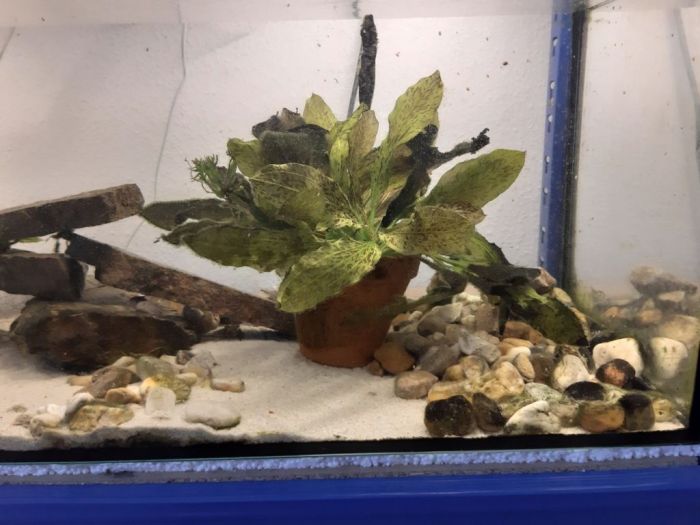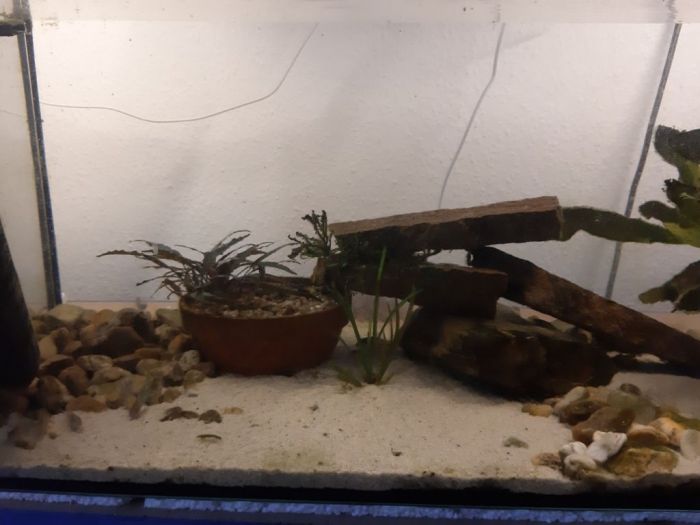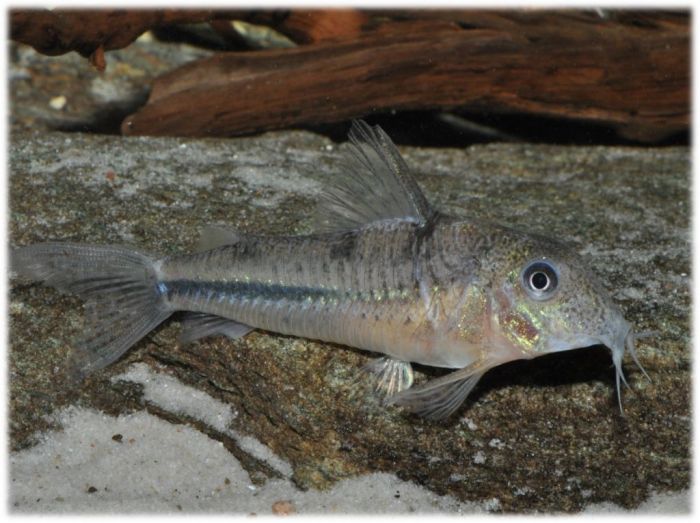Maintenance (preservation) of Scleromystax prionotos in continuous setup
Submitted by erik.schiller on 25. August 2019 - 12:14
Field report by project member Torsten Friedrich
By chance, through participation in the ÖVVÖ conservation project 'Mata Atlantica', I came to a new realisation in reproduction. At some point a small Scleromystax prionotos swam in the species only tank. I had often read about continuous setups for "lazy" aquarists, but I had never tried it like this with catfish. Over the spawning break of my fish, I thought about how the tank, first 112 l, now 160 l, could be redesigned accordingly. I increased the number of hiding places and only the middle part of the tank had a sandy substrate. All other areas were filled with 16-32 mm pea gravel in several layers. This is where the Scleromystax prionotos prefer to stay.
My fish started spawning again in late summer, but as usual, only a few eggs and most of them were infected with fungus. I continued to take the spawn that I could discover, always assuming that I would not discover everything. This was the case, as I soon discovered small fish in the breeding tank. Unfortunately, I then made the mistake of catching these young and putting them in a separate tank. There they died a few weeks later. From then on I became a bit ignorant and reduced my efforts a bit, also for external reasons. I only changed the water once a week, but continued to feed the fish sufficiently with tabs and frozen food. The current was also reduced. Nevertheless, the fish spawned relatively regularly, but I left the spawn completely in the tank, as I wouldn't have found everything anyway.
I always found most of the eggs in the coarse gravel and sometimes also on an aquarium pane. The catfish were obviously not really eating their spawn, because you could easily follow the development of the eggs, despite the fact that every now and then a new fish "apeared". After 3-4 days most of the eggs had disappeared, but with longer observation time and good eyes you could always discover small fry in the gravel strip. Even if only 1-3 fish appeared per spawning, over time this is a relatively simple way of reproducing an endangered species without much effort and you can be sure that these fish are robust. It is also a beautiful sight to see a mixed shoal of these fish moving through the tank, from small to large. Maybe I could give you an incentive to try breeding in this way and thus participate in the conservation project?



Category:
